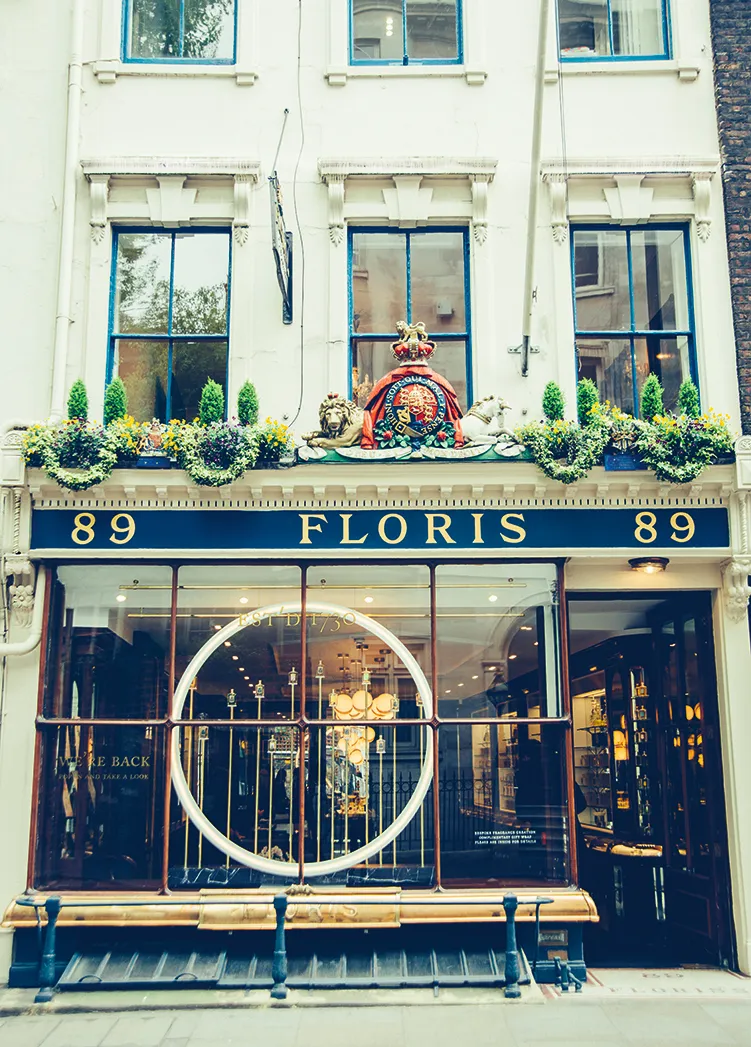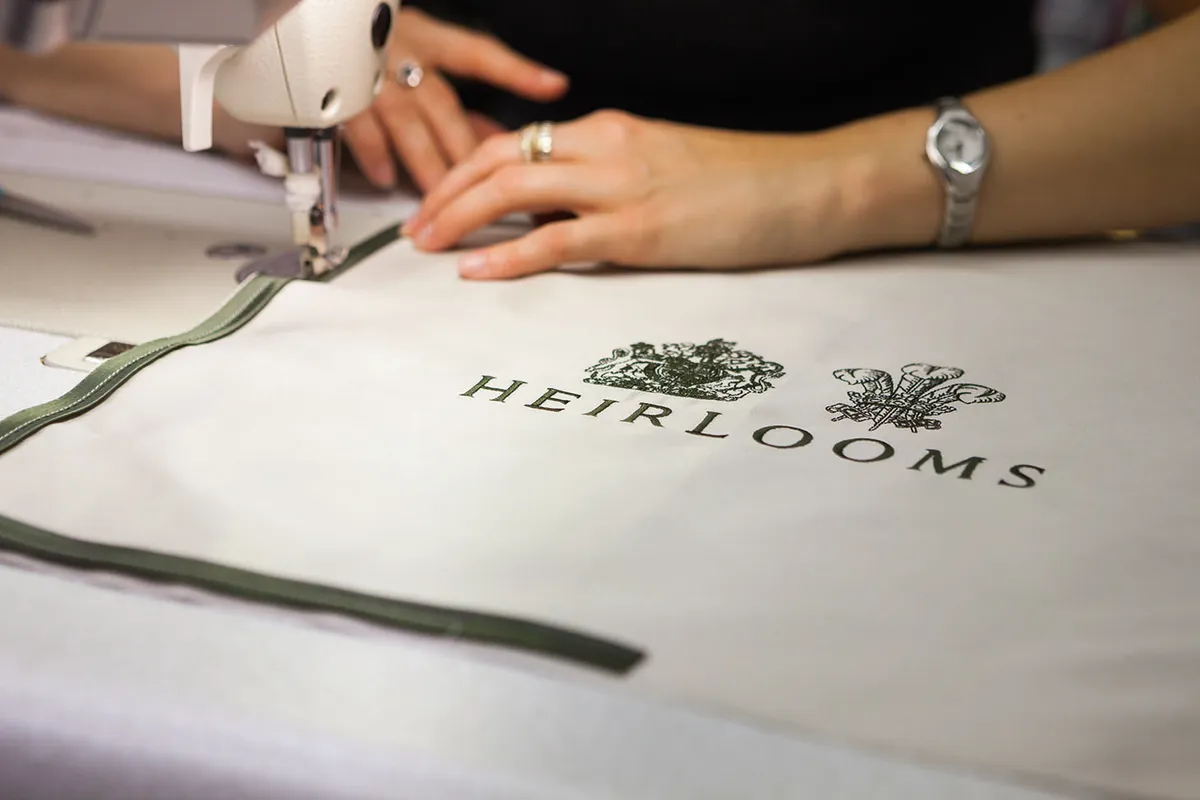Banquets, pageants, gala performances, street parties... there are many ways to mark a monarch’s anniversary on the throne. Back in 1935, however, the Royal Warrant Holders Association did it in some style, celebrating the 25th anniversary of the accession of George V by building a large brick house, filling it with its members’ creations, and presenting it to the King.
The King’s House, as it was known, was built for the 1935 Ideal Home Exhibition at Olympia, London, and later dismantled and rebuilt in Surrey. And, for the exhibition, the house was filled with examples of the trades, products, and skills of warrant holders – furniture designers, jewellers and clockmakers, clothes designers and more. It must have made a fascinating and beautiful showcase of some of the best-quality craftsmanship of the time.

What is a Royal Warrant?
A Royal Warrant of Appointment recognises those who have supplied goods or services to the households of HM The King, or HRH The Prince of Wales. Warrant holders, or grantees, must have an ongoing trading arrangement – and also demonstrate not only their credentials of excellence, but also their environmental and social responsibility throughout the supply chain.
Today, Royal Warrant holders represent a huge cross-section of trade and industry, from individual craftspeople to global multinationals.
Upon a change of monarch, the royal household reviews warrant grants, while the company or individual may continue to use the Royal Arms in connection with the business for up to two years.
If a company is granted a Royal Warrant, it receives a Royal Warrant document and the right to display the Royal Arms on their product, packaging, stationery, advertising, premises and vehicles.

How do you get a Royal Warrant?
Companies are eligible to apply for a Royal Warrant after they have supplied the royal households with goods or services for at least five years out of seven. Warrants are granted for up to five years, after which time a renewal must be sought.
As part of the application for a Royal Warrant, companies are required to demonstrate that they have an appropriate environmental and sustainability action plan.
What is the Royal Warrant Holders Association?
Formed in 1840, the Royal Warrant Holders Association endures ‘to ensure the continued existence of the Royal Warrant as a treasured and respected institution’. In effect, it helps to administer applications for new Royal Warrants and changes to existing ones.

When were the first Royal Warrants given?
Royal Warrants effectively began in the Middle Ages. Gaining royal favour was a fiercely fought competition, and the monarch could pick and choose the crème de la crème of Britain’s top tradespeople. As early as the 13th century, a department known as the Great Wardrobe organised the royal household’s accounts and administration, and kept records of transactions between the household and the types of craftspeople and traders who hold warrants today.
By the 1400s, the Lord Chamberlain, as head of the royal household, began to formally engage tradespeople with a Royal Warrant of Appointment, and this arrangement still operates today.
One early demonstration of the extraordinary range of talent and expertise available to the crown was the evocatively named Field of Cloth of Gold, the lavish meeting between Henry VIII and France’s monarch, François I, in northern France in 1520.
An opulent display of wealth by both sides, the summit took its name from the abundance of cloth of gold (an expensive fabric woven with silk and gold thread) that adorned the tents and costumes.

Moving forwards through history, warrants progressed significantly under certain monarchs. For example, Elizabeth I would commonly progress around the country and bestow warrants upon goldsmiths, silk merchants, and other traders whose products added to her regal finery – a key part of her royal legitimacy in an England deeply divided along religious lines.
Later, George IV, nicknamed ‘the First Gentleman of Europe’, loved to dress well and surround himself with fine things. Under George’s rule the tailors of Jermyn Street, London (among them the skilled Huguenot silk weavers, recently arrived from France) became new warrant holders – and the number of holders doubled, from 100 to 200. Around the same time, in the 18th century, royal tradesmen began displaying the Royal Arms on their premises and stationery.
Under Queen Victoria, warrants mushroomed in number, from 200 to some 2,000. This explosion in patronage was down to factors such as the growth of the British Empire – with the many new colonies demanding huge amounts of resources and materials, and new companies springing up to meet these needs – and the Industrial Revolution.

How many Royal Warrant Holders are there now?
Before Charles took the throne, there were over 800 companies and brands that held Royal Warrants and supplied various Royal Households. However, not all of the companies Charles endorsed as a Prince have stayed on his list. Of the 145 remaining, seven have also been given a second warrant from Queen Camilla.
The full list of the 145 companies can be found at Royal Warrant Holders Association. It includes Caverswall China Company of Staffordshire, goldsmith Fiona Rae, Halcyon Days (a supplier of Objets d'Art) and Jen Jones, supplier of historic Welsh quilts, blankets, and antique and vintage textiles.
Meanwhile, companies that were previously endorsed only by Queen Elizabeth are waiting to find out in a separate review what will happen with those warrants.

Famous warrant holders
The elegant London district of St James's is full of warrant holders – rare rug dealers, antiques dealers and more. Among the early warrant holders in the district was the perfumier Floris, originally a comb maker, who has the Royal Arms built into its premises on Jermyn Street, St James’s (Arms later had to be detachable, in the event of the warrant’s withdrawal).
Founder Juan Famenias Floris and his wife Elizabeth began selling perfume, combs and shaving products at 89 Jermyn Street in 1730, receiving their first Royal Warrant as ‘Smooth Pointed Comb Maker to HM The King George IV’ in 1820. Floris has retained its Royal Warrant for 2024.

Axminster Carpets will be keen to know why it did not make it onto this year's list. The company’s first Royal Warrant dates back to c1768, for the supply of woven carpets and rugs for Buckingham Palace, which King George III had recently bought as a London residence for Queen Charlotte.
The royal couple visited the Axminster factory in 1789 (the original factory is now the Axminster Heritage Centre; its successor is a 10-minute walk from the original site).
Founded in 1755, Axminster has created carpets for monarchs including George III and Elizabeth II. Its products adorn Buckingham Palace, Windsor Castle and Osborne House – as well as Chatsworth, Brighton Pavilion (built as a seaside pleasure palace for George IV), the Houses of Parliament, and many other landmark properties around the world.
Elsewhere, Heirlooms is the only linen company to have been awarded Royal Warrants to both the Queen (2005, renewed in 2010 and 2015) and the former Prince of Wales (2012). It has been renewed by King Charles this year.

‘Our first order was for HM Queen Elizabeth The Queen Mother, after which we were delighted to supply linens to the Queen and the (former) Prince of Wales, including linens for the wedding of the Duke and Duchess of Cornwall,' explains managing director Ruth Douglas.
‘We continue to supply several branches of the royal family and cherish our relationship, but we are also acutely aware that we must continue to earn these honours and that they can’t be taken for granted.’
After supplying the Queen’s residences, the company started working with the former Prince of Wales’s households – which is where sustainability and environmental responsibility came to the fore. ‘This ethos is now fully incorporated into our company strategy and we have, through our association with the warrants, been able to use the information to assist our suppliers in developing their own sustainable principles,’ Ruth explains.
‘On a day-to-day level we make sure we are fulfilling our obligations as a Royal Warrant holder in conducting our business relationships with the utmost integrity, looking after our own loyal staff and ensuring we are making a positive difference. The guidance, training and support we have received from the Royal Warrant Holders Association in broadening our knowledge and understanding has been inspirational.’